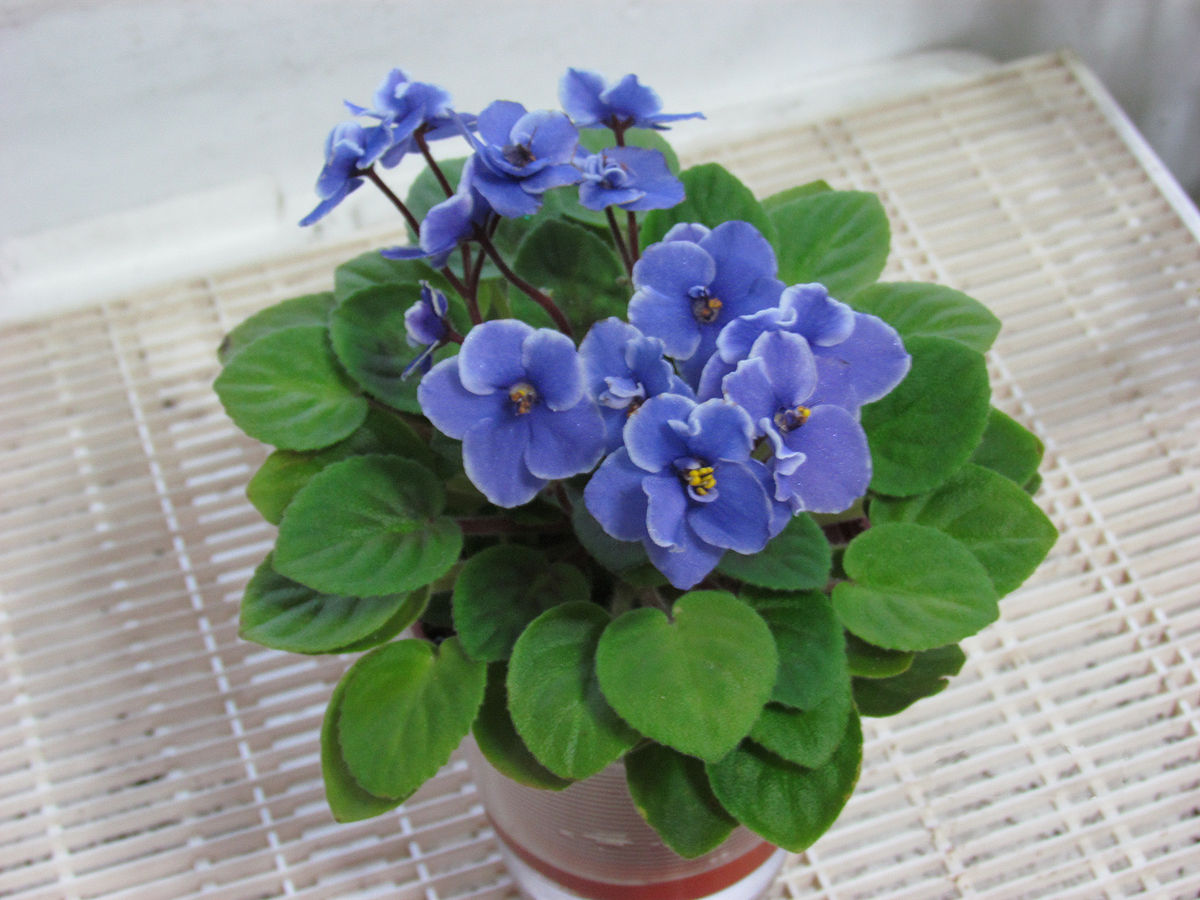African violets help chase away winter blues

COLUMBIA, Mo. — Just in time to brighten the dull, dreary days of winter, the National Garden Bureau has named the African violet as its houseplant of the year for 2024.
The choice is an excellent one, says University of Missouri Extension state horticulture specialist David Trinklein. African violets thrive in most interior settings, provide nearly continuous color and are inexpensive.
African violet ranks among the best-selling potted plants in Europe and is a favorite windowsill sitter for Americans as well, Trinklein said. Few plants offer as much vibrant color and bloom as the simple-to-care for African violet. “They seemingly are never without flowers,” he said.
The plant is native to Africa, as its name implies. Its scientific name is Saintpaulia ionantha, in honor of Baron Walter von Saint Paul, German governor of an African province in what is now Tanzania. In 1892 he found the plant growing in shady areas of the Usambara Mountains. Von Saint Paul sent seeds of the plant to his native Germany, where it enjoyed some success as a houseplant. It slowly spread to other European countries and came to the United States in 1926, when a California firm imported its seeds from German and British greenhouses that specialized in the plant.
Since that time it has been developed into more cultivars than any other flowering houseplant. The African Violet Society of America lists names and descriptions of nearly 10,000 registered cultivars.
African violet varieties are almost as varied as snowflakes, Trinklein said. There are many colors of blossoms, some multicolored, and petals may be striped, spotted or curly-edged. Violets vary by petal count, blossom count and blossom shape, but they all share a common beauty good for the common cabin fever, he said.
Variegated leaves with markings of white, pink or other contrasting colors are readily available and add to the novelty of this popular plant.
There are few other plants that will flower as well in low-light conditions as African violets. They require at least 800 but no more than 1,200 foot-candles, available in most bright north or east windows. African violets should not sit in direct sunlight, but midwinter sunlight generally is not harmful. Violets also grow well under fluorescent lights placed 12-15 inches above the canopy of the plant for up to 18 hours per day.
Native to tropical climates, the violets prefer temperatures between 60 and 80 degrees Fahrenheit. Night temperatures between 65 and 70 degrees are preferred, while day temperatures should be 10 degrees warmer.
Trinklein recommends that growers use soil-less growing media, such as a blend of peat moss, vermiculite and perlite, although some violet fanciers prefer using soil rich in humus. If using soil, sterilize it to reduce the risk of disease infestation. Soil-less mixes are considered biologically inert and do not need to be sterilized.
Keep plants uniformly moist, but growers should remember that excess water kills the plant, Trinklein said.
He recommends wick watering using a candlewick or nylon twine extending from the growing medium via a hole in the bottom of the pot to a water/nutrient reservoir below the pot. Plastic margarine tubs can be used for the latter.
Leaf spotting can be a problem when water 10 degrees above or below the leaf temperature contacts the leaves. If overhead watering is practiced, use room-temperature water, and keep it off of leaves.
Most homes have low humidity during winter, and this can be a problem for violets, Trinklein said. To increase the humidity around plants, place them on shallow trays of gravel containing water. Make sure, however, that the bottom of the pot does not sit in water. Home humidifiers also work well.
If located properly and watered regularly, African violets need little other care besides occasional fertilizing with a water-soluble fertilizer. Special African violet fertilizers or houseplant fertilizers high in phosphorus are good choices. A diluted fertilizer solution at each watering keeps growth constant and eliminates any chances of over-fertilization, a common error of new growers.
“Just because it’s not growing doesn’t mean it needs more fertilizer,” Trinklein said. Pale green leaf color may indicate too much sunlight or low fertility. He cautions against using water that has gone through a water softener.
To avoid mealy bug contamination, quarantine new plants for several weeks before introducing them to your collection. “You don’t even know they are there until it’s too late,” Trinklein said. If mealy bugs appear, swabbing them with isopropyl (rubbing) alcohol is an effective control unless populations are excessive. The white bugs have a waterproof coating resistant to most insecticides. He recommends throwing the plant away and buying another if there is a large mealy bug infestation.
African violets seldom need pots larger than 4 inches in diameter. The danger of overwatering and development of root and crown rots increases if pots are too big.
Old plants sometimes develop long, woody stems. Leaves of these plants may be cut off, allowing about an inch of the petiole to remain. Treat the cut petiole with rooting hormone and place it in a moist rooting medium. Vermiculite is an excellent choice for rooting, Trinklein said. Once in the rooting medium, a plastic cup should be inverted over the leaf to aid rooting. The cutting should take three weeks to root and up to 12 weeks to get a good start. Cuttings form new, more compact plants and are generally more vigorous and bloom more abundantly.
With a little knowledge and a lot of love, violets will reward their owners with a burst of hope that spring is on its way, Trinklein said.
Miss Clipping Out Stories to Save for Later?
Click the Purchase Story button below to order a print of this story. We will print it for you on matte photo paper to keep forever.

